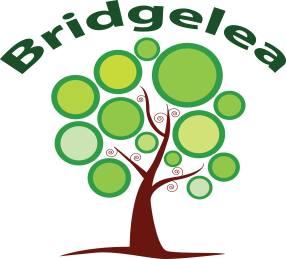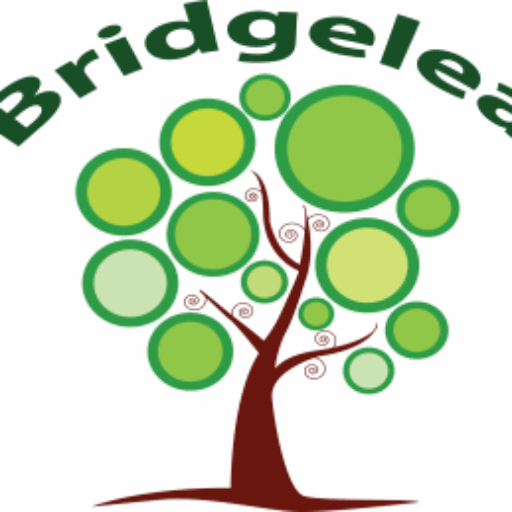English & Reading
Intent
At Bridgelea the children are taught at “stage not age,” and many demonstrate difficulties in literacy due to their SEMH and SLCN needs. The English curriculum encourages the foundations of early reading and writing skills, in an age appropriate, accessible manner. The use of quality texts, opportunities to develop oracy and speaking and listening skills underpin our approach to English.
Our Aims
- To nurture and support the essential skills of reading and writing and develop this to a high standard for all pupils.
- To promote a culture of reading for learning and reading for pleasure.
- To develop engagement and skills of pupils as independent learners.
- To prepare and equip pupils for the next stage in their education following placement at Bridgelea.
- To narrow the attainment gap in reading and writing for all pupils at Bridgelea by having a clear systematic phonics, reading and writing provision in place.
Implementation
At Bridgelea children’s learning is understood developmentally and we assess all children to identify any gaps in their phonic knowledge. Phonics is delivered daily following Little Wandle Letters and Sounds Revised. Decodable texts matching the child’s phonics level are used. As part of the Little Wandle scheme, children access three reading practice sessions a week: decoding, prosody and comprehension.
We use the Accelerated Reader Programme and STAR/Early STAR assessments to assess children’s reading. This establishes the children’s zone of proximal development range and indicates the books the children can read. PM Benchmarking and comprehension conversations are also a tool to support the assessment of children’s reading. We use Classroom Monitor to teacher assess children’s reading skills.
Reading is split into the following skills:
- Retrieval (Summarising, Reviewing Researching)
- Inference and Deduction
We use the 7 steps of reading to teach the children the reading skills as part of a teacher led reading session. In addition to this, children read daily to an adult to develop their fluency and prosody skills.
We have developed the Bridgelea Pathways that clearly outlines the reading provision at our school (see attachments).
Reading for Pleasure
There is strong evidence that reading for pleasure can increase empathy, improve relationships with others, reduce the symptoms of depression and the risk of dementia, and improve wellbeing throughout life, new research carried out for The Reading Agency has found.
There is already strong evidence to show that reading for pleasure plays a vital role in improving educational outcomes. However, in the UK, reading levels are low among people of all ages: most children do not read on a daily basis and almost a third of adults do not read for pleasure.
At Bridgelea we believe that the ability to read is fundamental to pupils’ learning across the curriculum, their ability to be independent and their future life choices. Reading development is closely related to that of speaking and listening and of writing. By reflecting upon and talking about the stories and texts they encounter, pupils are better able to make sense of their own experiences of the world and their place in it.
Children share a class book that the class reads daily.
We believe that reading feeds pupils’ imagination and opens up a treasure-house of wonder and joy. A broad range of reading material is available in each classroom. Throughout the school, all children are encouraged to choose books which they would like to read and are given the skills needed to choose books which are appropriate. The variety of books available to the children in our school, enable every child to find a book they enjoy; to create a positive reading culture. All pupils are encouraged to read widely across both fiction and non-fiction to build upon the love of reading and build upon their knowledge across the curriculum. This is tracked using accelerated reader.
Reading at Home
In order to promote reading at home, we use myON which enables children to read books that are pitched at their level. We also send home weekly phonics sheets for families to use at home
Writing, SPAG and transcription
At Bridgelea, we focus on supporting children to write for a purpose. Each purpose has a “RAFT” (Reason, Audience, Features, Terminology) which allows teachers to target the purpose, spec/ifically in their planning.
Our work encompasses the move from word, to sentence, to text level. Alongside this we also have several approaches that support children’s development in English:
- An agreed sentence displayed across school which demonstrates the complexity expected of the stage of the children in that room. (Base sentence- The cat sat (subject, verb)
- Colourful Narrative (A key stage one approach prescribed by SALT)
- Colourful Semantics (A SALT programme useful for children with MLD/ASC)
- TalkBoost and TalkBoost 2 (A SALT programme widening vocabulary and exposing children to new words).
Teaching of spellings are done alongside transcription skills. Children are taught specifically about vocabulary through looking at the morphology of the word whilst applying rules of prefix/suffix, plurals, rules of possession and exploring antonyms and synonyms.
At Bridgelea, we are a language friendly school and use Elklan approaches to support children’s development of vocabulary. We have adopted a tiered approach to vocabulary development as detailed below:
- Tier 1:These are the common, everyday words that most children enter school knowing already. Since we do not need to teach these, this is a tier without tears!
- Tier 2:This tier consists of words that are used across the content areas and are important for students to know and understand. Included here are process words like?analyse?and?evaluate?which students will run into on many standardized tests and that are also used at the university level, in many careers, and in everyday life. We really want to get these words into students’ long-term memory.
- Tier 3:This tier consists of content-specific vocabulary—the words that are often defined in textbooks or glossaries. These words are important for imparting ideas during lessons and helping to build students’ background knowledge.
RAFT units can vary in length: they can be two or three weeks. There is a long term plan in place that has suggested texts and clear outcomes that progress throughout mileposts. The books selected ensure that children can see themselves and others through the texts.
Impact
When children begin at Bridgelea, there is a clear baseline assessment period in place. This includes: a phonics assessment, a STAR/Early STAR assessment, a Speech and Language screener and reading and writing teacher assessment. Following this, the correct pathways are identified for the child. Children are then assessed termly dependent on their place in the pathway. Children on the phonics pathway are assessed using Little Wandle assessments and Early STAR assessments. Children on the targeted reading pathway are assessed using STAR assessments. All children are assessed using key performance indicators for the year they are operating.
Writing is assessed using the Bridgelea Framework, which is based upon the Key Performance Indicator’s (KPI) for the National Curriculum. Children are baselined during the first half term they are at Bridgelea, information from the child’s previous school is also considered, this enables teachers to find a “best fit” to begin assessing writing skills. This is then continued and inputted termly. This data is moderated termly.
Pupil progress meetings with the teacher and a member of the Senior Leadership are held termly. Discussions about the provision a child needs for the following term take place and interventions are identified where required.




